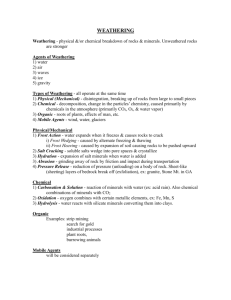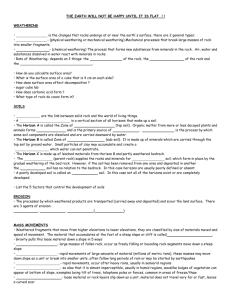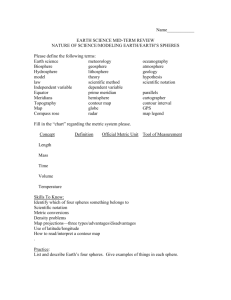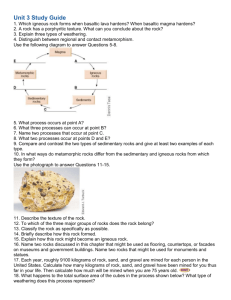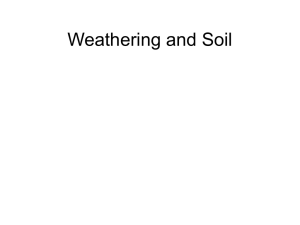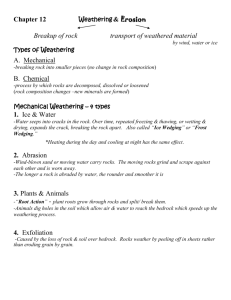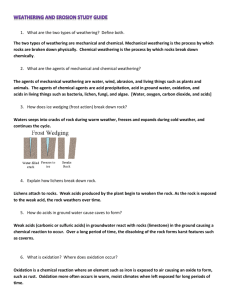Rocks and Weathering
advertisement
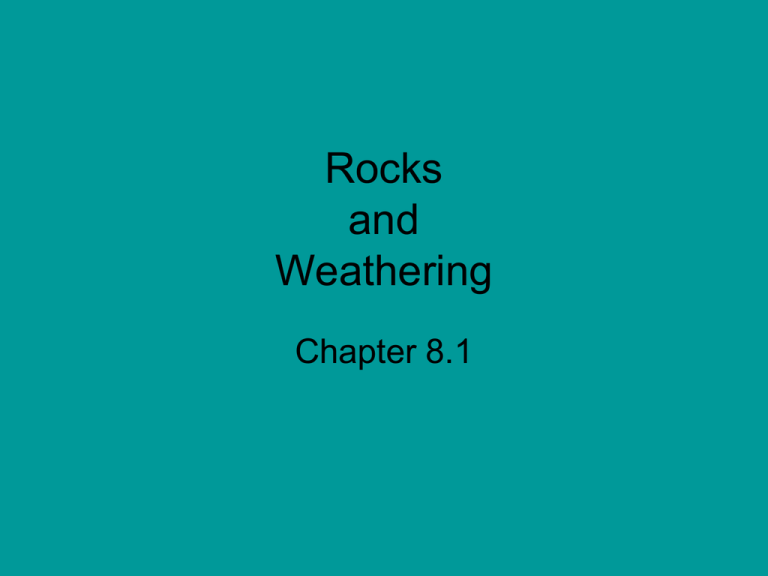
Rocks and Weathering Chapter 8.1 Weathering- the breaking of rock into smaller fragments • Mechanical weathering – breaks rock apart without changing the chemical composition Examples: Rocks colliding with other rocks in rivers Tree roots lifting rock Ice wedging caused by freezing and thawing • Chemical weathering – reaction of air, water and/or other substances with the minerals in rock The composition of the rock is changed Water is the main cause of chemical weathering • It dissolves away some minerals leaving a different composition behind • Compounds in air combine with water and react with minerals upon contact • Some metals react with oxygen and water (oxidation) Acids cause chemical weathering • Water and carbon dioxide form carbonic acids which dissolve calcite and create caves • Plant roots and decaying plants create acids that dissolve minerals making rock weak Climate effects the speed of weathering - Chemical weathering is most rapid in warm, moist areas. - Mechanical weathering is most rapid where freezing and thawing occur. Chemical or Mechanical? Colonies of lichens growing on the surface of rocks. Chemical Chemical or Mechanical? The wedging of tree roots along natural joints in granite outcrops Mechanical Chemical or Mechanical? Solution of limestone by acidic groundwater Chemical Chemical or Mechanical? The oxidation of minerals which contain iron Chemical Chemical or Mechanical? Animal burrows dug in rock which let in water and air Mechanical Chemical or Mechanical? Repeated freezing and thawing of water cracks rock or joints Mechanical Chemical or Mechanical? The action of water, salt and air on car fenders and panels Chemical or Mechanical? The action of water, salt and air on car fenders and panels Chemical Chemical or Mechanical? The sun fading paint on houses and cars Chemical Chemical or Mechanical? Formation of potholes in streets during severe winters Mechanical Chemical or Mechanical? Lifted sections of sidewalk along tree-lined streets Mechanical How Soil Forms Section 8.2 Soil Profile Soil – a mixture of weathered rock and organic matter - can take hundreds of years to form - varies in thickness Humus – decaying plants and animals that mix with weathered rock Soil Profile - shows the layers of soil and weathered rock O-Horizon Litter layer- leaves A-Horizon Top Soil – dark colored, sediment, decayed material, insects, worms B-Horizon Lighter color, little or no humus, contains minerals from leaching C-Horizon Some material leached from B-horizon, partly weathered rock, no humus Solid rock below soil profile

